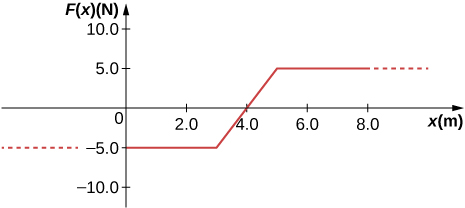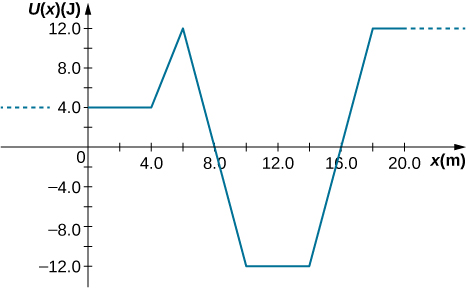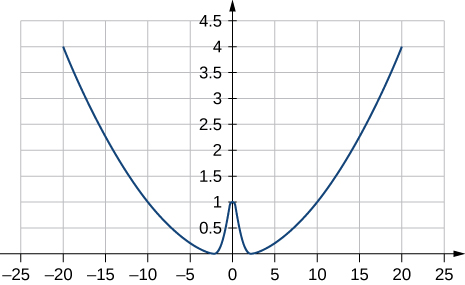| << Chapter < Page | Chapter >> Page > |
Check Your Understanding Find for the mass-spring system in [link] if the particle starts from at What is the particle’s initial velocity?
A mysterious constant force of 10 N acts horizontally on everything. The direction of the force is found to be always pointed toward a wall in a big hall. Find the potential energy of a particle due to this force when it is at a distance x from the wall, assuming the potential energy at the wall to be zero.
10 x with x -axis pointed away from the wall and origin at the wall
A single force (in newtons) acts on a 1.0-kg body. When the speed of the body is 4.0 m/s. What is its speed at
A particle of mass 4.0 kg is constrained to move along the x -axis under a single force where The particle’s speed at A , where is 6.0 m/s. What is its speed at B , where
4.6 m/s
The force on a particle of mass 2.0 kg varies with position according to ( x in meters, F ( x ) in newtons). The particle’s velocity at is 5.0 m/s. Calculate the mechanical energy of the particle using (a) the origin as the reference point and (b) as the reference point. (c) Find the particle’s velocity at Do this part of the problem for each reference point.
A 4.0-kg particle moving along the x -axis is acted upon by the force whose functional form appears below. The velocity of the particle at is Find the particle’s speed at Does the particle turn around at some point and head back toward the origin? (e) Repeat part (d) if

a. 5.6 m/s; b. 5.2 m/s; c. 6.4 m/s; d. no; e. yes
A particle of mass 0.50 kg moves along the x -axis with a potential energy whose dependence on x is shown below. (a) What is the force on the particle at 12 m? (b) If the total mechanical energy E of the particle is −6.0 J, what are the minimum and maximum positions of the particle? (c) What are these positions if (d) If , what are the speeds of the particle at the positions listed in part (a)?

(a) Sketch a graph of the potential energy function where are constants. (b) What is the force corresponding to this potential energy? (c) Suppose a particle of mass m moving with this potential energy has a velocity when its position is . Show that the particle does not pass through the origin unless

a. where ; b. ; c. The potential energy at must be less than the kinetic plus potential energy at or Solving this for A matches results in the problem.

Notification Switch
Would you like to follow the 'University physics volume 1' conversation and receive update notifications?